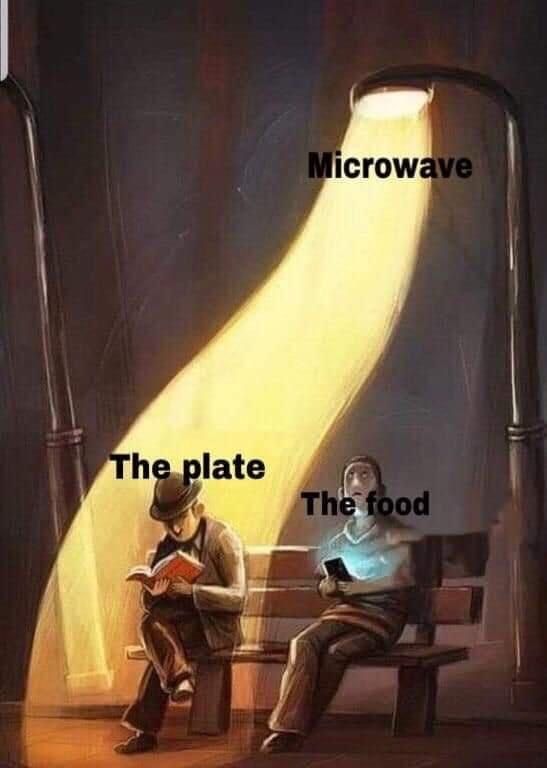this post was submitted on 12 Oct 2023
648 points (96.0% liked)
memes
10703 readers
2561 users here now
Community rules
1. Be civil
No trolling, bigotry or other insulting / annoying behaviour
2. No politics
This is non-politics community. For political memes please go to [email protected]
3. No recent reposts
Check for reposts when posting a meme, you can only repost after 1 month
4. No bots
No bots without the express approval of the mods or the admins
5. No Spam/Ads
No advertisements or spam. This is an instance rule and the only way to live.
Sister communities
- [email protected] : Star Trek memes, chat and shitposts
- [email protected] : Lemmy Shitposts, anything and everything goes.
- [email protected] : Linux themed memes
- [email protected] : for those who love comic stories.
founded 2 years ago
MODERATORS
you are viewing a single comment's thread
view the rest of the comments
view the rest of the comments

That's not how RF works. For one thing, microwaves run at 2.4GHz, which means they can't "see" physical features smaller than a few centimeters (to greatly oversimplify what's going on). The miniscule bubbles simply aren't a big factor.
Rather, what's happening is that the ceramic (probably the glaze if we're honest) has a higher cross section and/or lower specific heat than the food, especially when it's frozen. It absorbs more energy and heats up faster.
I would also expect far fewer and smaller bubbles with industrial slip casting ("pouring into a mold") than manual production.